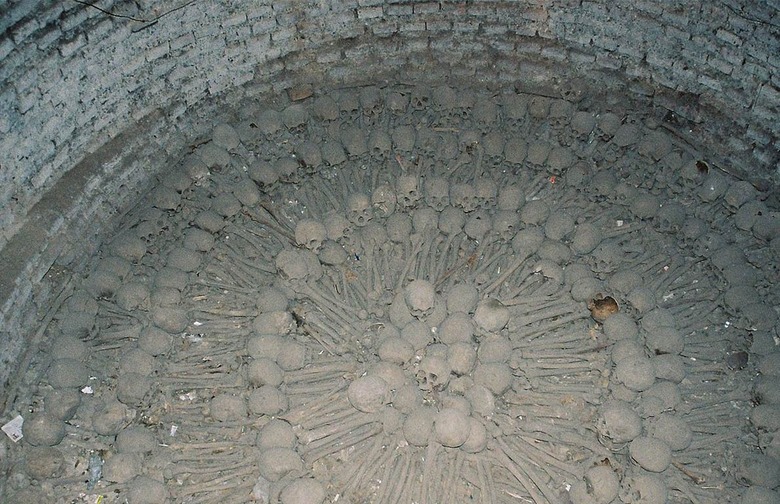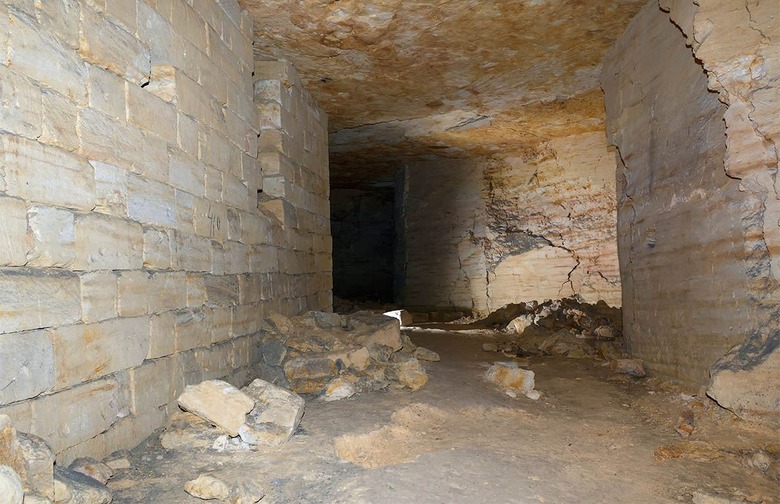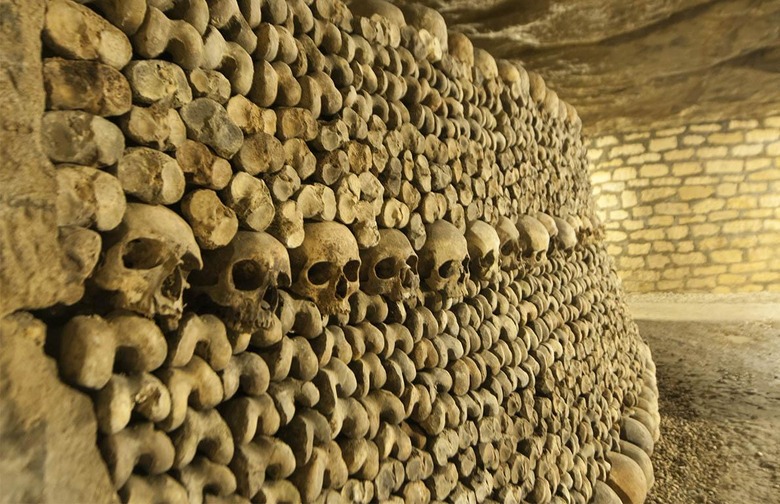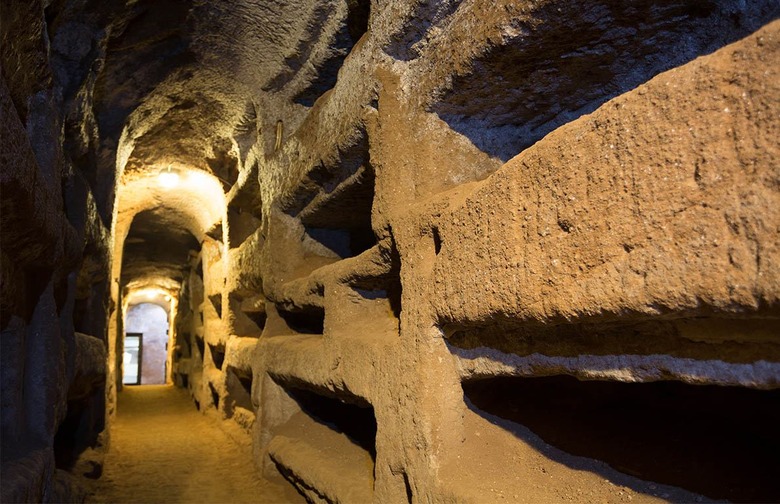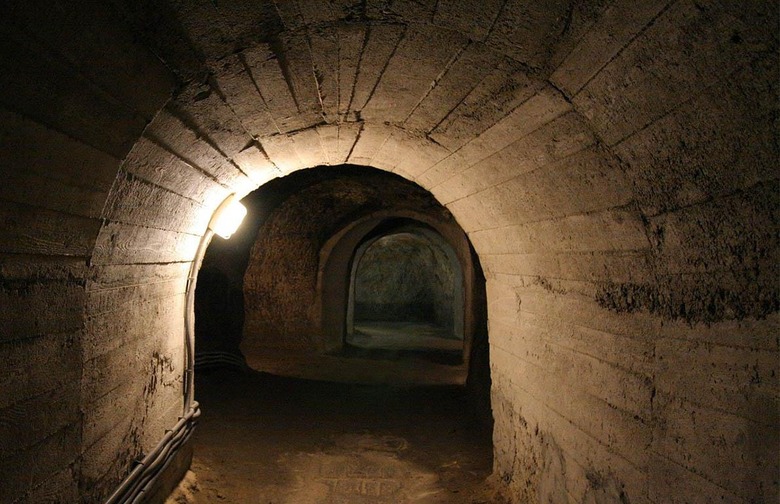6 Creepiest Catacombs Not For The Claustrophobic (Slideshow)
Built in the second century, it is believed that this burial chamber was initially meant for a single family but eventually expanded to include other bodies up until the fourth century. Unlike many of the other catacombs around the world, this one remained a secret for some time, only being rediscovered in 1900 after some quarry worker's dumb ass accidentally fell into the access shaft. The donkey likely didn't survive the plunge, but its death would not have been in vain. Archeologists found heaps of broken pottery (hence the name, which translates to "Mound of Shards"), the makings of a pulley system for lowering bodies, a number of human and animal remains, multiple sarcophagi, a funeral banquet hall (known as the "Triclinium"), and architecture and artwork that wonderfully blends Egyptian, Greek, and Roman styles. The eeriest part, however, is the area filled with numerous lifelike sculptures in various poses. Visitors can check this out, along with the Hall of Caracalla, which contains the bones of humans and horses that were likely killed in the year 215 by Emperor Caracalla.
Monastery of San Francisco, Peru
The church and monastery of San Francisco in Lima, Peru, was completed in 1774 and contains a library boasting 25,000 antique texts. Underneath, there's also a network of catacombs that contain the remains of 25,000 bodies. (Some estimates say the number could be as large as 75,000!) As if that wasn't creepy enough, many of the skulls and bones interred there have been neatly arranged into a series of geometric figures and elaborate works of art — because what else would you do with a ton of old bones, throw them in a box? Interestingly, these crypts were remarkably well built and have withstood numerous major earthquakes. One-hour tours are conducted daily from 9:30 a.m. to 5:45 p.m., with an entrance fee of only about $2.
Click here for a list of the 101 best restaurants in Latin America and the Caribbean for 2016.
Odessa Catacombs, Ukraine
The creepiest parts of the extensive Odessa Catacombs underneath Odessa, Ukraine, aren't the things we know, but the things we don't know. They were built sometime in the 1800s for stone mining, but were later used for smuggling. Because the tunnels are considered unsafe and have not been fully mapped, only a small portion is open to the public. However, that hasn't stopped thrill-seeking tourists from entering the catacombs without authorization, which has led to incidents of people becoming lost in the tunnel network and, in some cases, dying of falls or dehydration.
Paris Catacombs
Ah, Paris. So lovely. So romantic. So creepy. Don't believe us? Then consider the fact that under your feet there's a whole network of corridors and passageways that hold the bodies of 6 million people. These ossuaries were set up in the late eighteenth century after the city's cemeteries filled up and a series of cave-ins began to occur around Paris. To remedy this, the remains were moved to reinforced tunnels, with more additions in the following years. At first a haphazard underground mess, in 1810, the head of the Paris Mine Inspection Service undertook renovations that turned the catacombs into a visitable mausoleum, which led to the skull stacking and intricate bone patterns seen today. Not only are there regular tours of this underground world, but the catacombs even have their own website. Closed on Mondays, they are open from Tuesday until Sunday from 10 a.m. to 8:30 p.m., with the last admission at 7:30 p.m. (Tours take approximately 45 minutes.) Admission is about 12 euros ($13), but various discounts are available, and guests under age 17 are free. You can enter at the western pavilion of the former Barrière d'Enfer ("Gate of Hell"), because creepiness.
Rome Catacombs
Italy has catacombs in Palermo, Naples, and numerous other cities, but the best (whatever that means) are in Rome. First excavated back in the second century, these underground corridors were actually built into the soft volcanic rock outside of the city walls, as Roman law forbade burial places within city limits. There are now 60 known subterranean burial chambers in Rome. The passages cover a whopping 590 acres of land and consist of as many as four levels on top of one another, with some extending as far down as 62 feet below the surface. Burial niches (called loculi) are carved into the walls, with fresco paintings and other early Christian art. Although once quite popular for burials of all kinds, the catacombs were all but abandoned by the tenth century. Today, the papacy is responsible for maintaining the passages, and brave guests are allowed to tour certain sites.
To illustrate how creepy they are, here's a story based on personal experience. When I and a few friends visited one of the entry points to the catacombs in 2008, we (as English-speaking American tourists) conducted our whole admission transaction with a nun who basically only spoke Italian. When we managed to ask where the tour guide was, instead of telling us to wait, the nun simply pointed down the open door into the catacombs. She didn't want us to wait for the tour guide to arrive; she wanted us to descend into the catacombs by ourselves to find the guide. And it's not like the guide was even nearby at the time. I know this because I pseudo-bravely walked down the stairs and into the cramped corridors about 10 feet, and, finding no one, loudly exclaimed, "nope!" and went back upstairs to wait for our guide with the rest of the living.
Znojmo Catacombs, Czech Republic
Unlike the other sites on this list, the vast labyrinth of underground passageways, cellars, and subcellars under the Czech city of Znojmo weren't primarily built for the storage of dead bodies. If you think this takes out the creepiness factor, you thought wrong. In fact, if the thought of catacombs brings about a fear of getting trapped inside and perishing, then this is probably the worst site, as parts of it were specifically designed to kill people. Built in the fourteenth and fifteenth centuries, the catacombs were created to protect the city's inhabitants from invading forces, and thus included trapdoors and hidden slippery slides that would drop enemy soldiers into deep wells from which they could not escape. Interestingly, the catacombs afforded locals the ability to still do a number of useful things such as searching the city for food undetected, gathering and disposing of water via a drainage system, and even using fireplaces, as they were designed to ventilate through house chimneys on the surface. Because of this last fact, enemy forces would often see smoke eerily rising from otherwise empty homes all around the city. Portions of the Znojmo Catacombs are open to tourists from April to October.
Click here to check out some usual wines from the Czech Republic.

